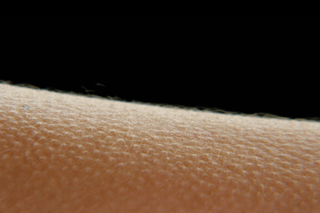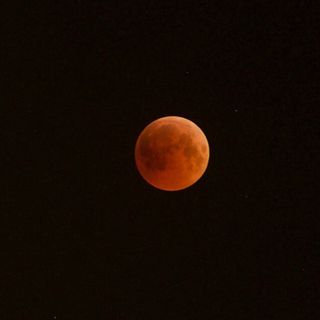
Why Art, Music Give You Skingasms
Frissons, as these responses are called, are a way humans react emotionally towards unexpected stimuli.

If certain music, artwork, or movie scenes give you chills or tingles on your skin, what you are experiencing are skin orgasms.
The sensation is officially known as a frisson, French for “aesthetic chills,” or brief moments of emotional excitement. Per studies, at least two-thirds of the world’s population experience frissons; music is the sensation’s most common trigger.
As David Robson, a science journalist, in an article for BBC Future, writes, “Some people feel music so strongly the sensations can be compared to sex.” Mitchell Colver, a Ph.D. Student in Education, describes frissons as, “waves of pleasure running all over your skin,” chills running up the spine, or goosebumps tickling the arms and shoulders, in an article for The Conversation.
When these feelings are limited to experiences that “ensure or endanger our survival – food, reproduction, or the terrifying plummet of a rollercoaster,” Robson asks, “How can music – hardly a life-or-death pursuit — move the mind and the body as powerfully as sex?”
To answer the question, Robson drew from the research of Psyche Loui, a psychologist at Wesleyan University, and her student Luke Harrison.
In a 1991 study comprising professional musicians and non-musicians, the duo observed around half of the participants experienced “trembling, flushing and sweating, and sexual arousal,” when they heard their favorite pieces. “People are often able to pick out specific measures that release an outpouring of those sensations,” Loui wrote of her research. These specific measures may include sudden changes in harmony, in volume, or brief melodic flourishes or dissonant notes.
Related on The Swaddle:
Why Are Habits Like Yawning, Scratching, Crossing Legs Contagious?
Besides establishing the fact that listeners pick out specific features while listening to a frisson-inducing song, Loui and Harrison also studied brain scans to understand how the brain was responsible for producing skin orgasms. They found it has to do with expectations – “from the moment we are born, we begin to learn certain rules that characterize the way songs are composed,” Loui adds in her research. And therefore, if a song follows these rules, it is boring and ineffective in being able to get attention from us. But if a song manages to touch the sweet spot, somewhere between familiar and unfamiliar, it ends up activating the autonomic nervous system — the brain stem, in particular. This triggers the release of dopamine in two main regions known as the caudate and the nucleus accumbens, causing the frisson.
“You see similar response when people take drugs or have sex, which may explain why we find shiver-inducing songs so addictive,” Louis told Robson.
Colver, writing for The Conversation, concluded frissons might also be related to a personality type. He wrote that if a person had intellectually immersed themselves in music, meaning if they were paying close attention to the stimuli, they were more likely to experience frissons than others; the amount of attention one pays to music depended on their personality type. After collating data from various studies, Colver found people who exhibit traits of being open to new experiences are more likely to experience frissons.
Per many studies, those who score highly in this personality trait have active imaginations, respect beauty and nature, are open to new experiences and reflect on their feelings.
Their active imaginations make them more likely to think about how the music is going to turn out or unfold, or to engage in musical imagery (when you combine daydreaming with listening to music), which increases the likelihood of frissons occurring.
And therefore, Colveroffers the most succinct summary of what a frisson is — a deep, emotional connection and reaction to music.
Anubhuti Matta is an associate editor with The Swaddle. When not at work, she's busy pursuing kathak, reading books on and by women in the Middle East or making dresses out of Indian prints.
Related


The Earth Has a Second Moon — for Now
